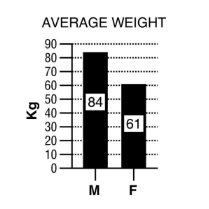Table 1.3 shows data on various factors that may or may not be related to resting pulse rate, time to recovery to resting pulse rate after a few minutes of exercise, and reaction time measured by how quickly a student could press a keyboard key after seeing a computer-generated prompt. For each question below, write a testable hypothesis, identify the dependent and independent variables, sketch
an appropriate graph of the results, and draw a conclusion from the data presented in the table. Discuss your results.
A. Does caffeine consumption have an effect on resting pulse rate?
B. Does age play a role in resting pulse rate? Does weight?
C. Is there a relationship between eating breakfast and recovery time?
D. Is there a relationship between reaction time and height?
E. Do women who smoke show differences in their resting pulse rates compared to female nonsmokers or to
male smokers and nonsmokers?
F. Does regular exercise have an effect on resting pulse rate?


Answers will vary, but examples follow (conclusions written here are based on cursory examination of graphed
data–no statistical tests of significance were performed).
A. Hypothesis: Caffeine consumption increases heart rate.
Independent variable: caffeine consumption.
Dependent variable: resting pulse rate.
Conclusion: Mean pulse rates between caffeine-drinking (68 bpm) and control subjects
73 bpm) are similar (large variation between individuals); hypothesis rejected.
B. Hypothesis: Pulse rate is lower in older people and is higher in heavier people.
Independent variables: age and weight.
Dependent variables: resting pulse rate.
Conclusion: Pulse rate was similar in all groups; hypothesis rejected.
C. Hypothesis: People who ate breakfast have a faster reaction time.
Independent variable: breakfast consumption.
Dependent variable: pulse rate.
Conclusion: People who ate breakfast had a faster reaction time (168.7 msec vs. 180.5 msec); hypothesis
supported.
D. Hypothesis: There is no relationship between height and reaction time.
Independent variable: height.
Dependent variable: reaction time.
Conclusion: Reaction time did not vary with height; hypothesis supported.
E. Hypothesis: Smokers of both genders have a higher resting pulse rate than nonsmokers
of either gender, and males and females are affected equally.
Independent variables: smoking and gender.
Dependent variable: pulse rate.
Conclusion: There was no difference in pulse rate in any of the groups
(70.4 bpm in nonsmokers vs. 70.3 bpm in smokers); hypothesis rejected.
F. Hypothesis: People who exercise regularly have a lower resting pulse rate.
Independent variable: exercise.
Dependent variable: pulse rate.
Conclusion: Regular exercise had no effect on resting pulse rate (68.9 bpm in
nonexercisers vs. 71.8 bpm in exercisers); hypothesis rejected.
Discussion may cover issues such as the effect of small sample size, use of adults of limited age range, lack of
control over treatments (were the subjects honest about age, eating breakfast, consuming caffeine, smoking, and
exercising?; were the quantitative data of height and weight determined in the lab using the same equipment and
same data collector?), the value of statistical analysis, and so on. It is likely that students will be surprised by some
of the results and could make erroneous conclusions. For example, pulse rate may vary with age, but without
including children and senior citizens in the sample population, this trend would be missed.
You might also like to view...
Another term for swallowing is deglutition
Indicate whether the statement is true or false
When oxygen levels in blood fall, the appearance of the blood is lighter
Indicate whether the statement is true or false
White matter fibers that pass from one gyrus to the adjacent gyrus are called
A) arcuate fibers. B) longitudinal fasciculi. C) association fibers. D) commissural fibers. E) projection fibers.
Where are synaptic knobs located?
A. Within the cell body B. Along axon collaterals C. At the ends of dendrites D. At the axon hillock E. At the distal ends of an axons